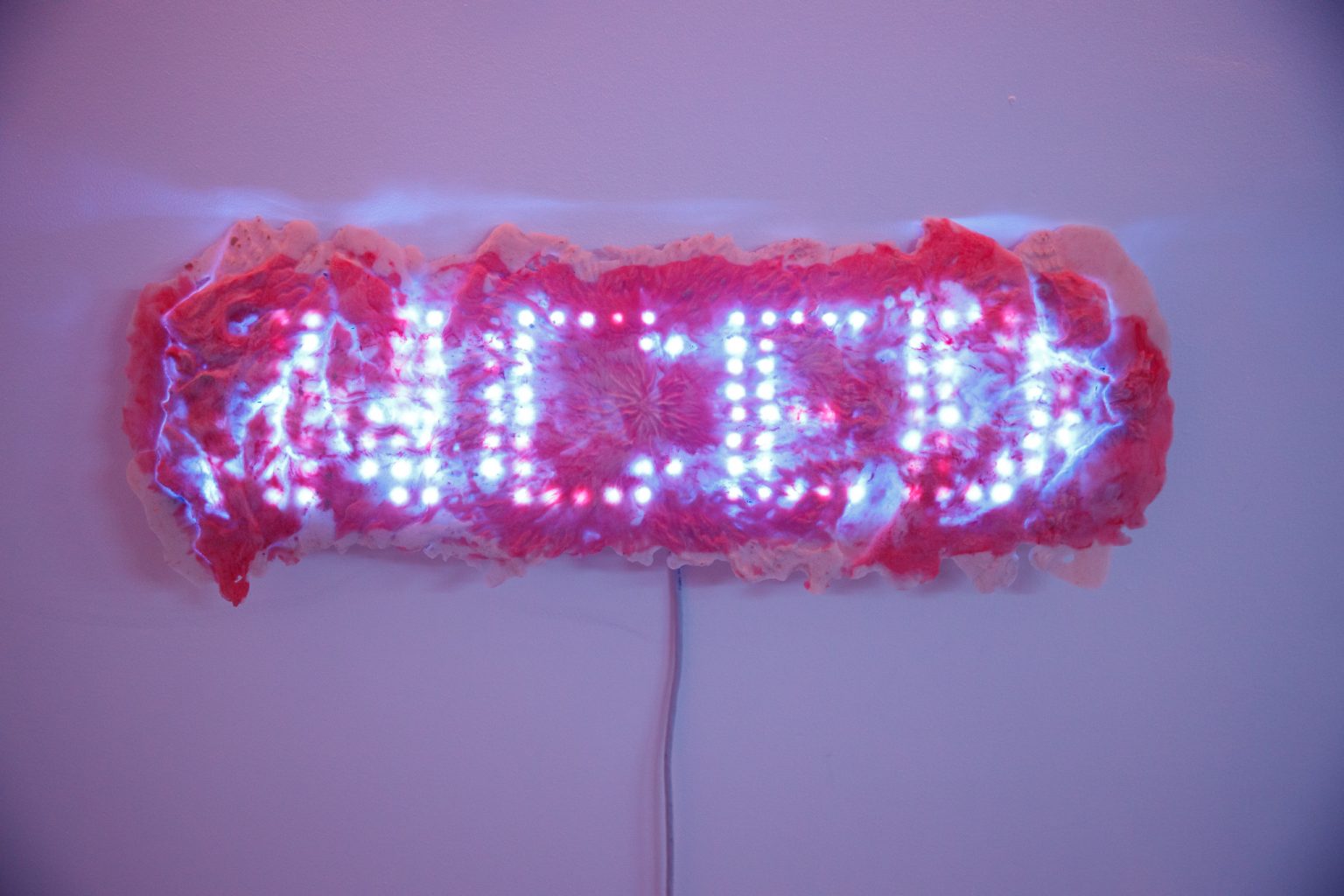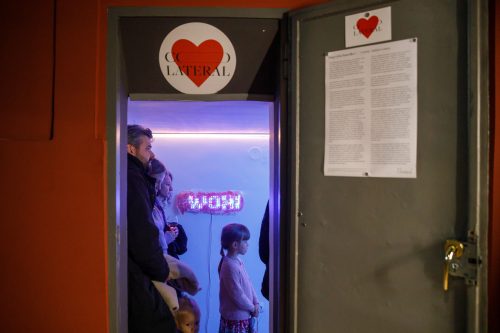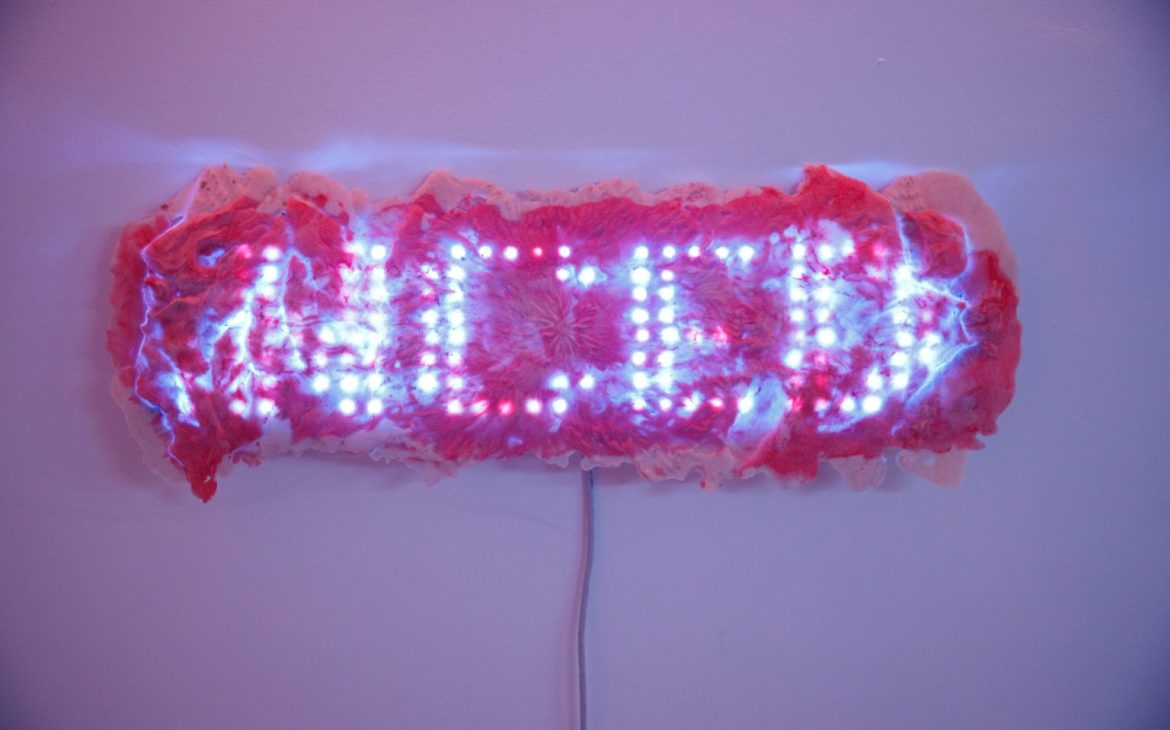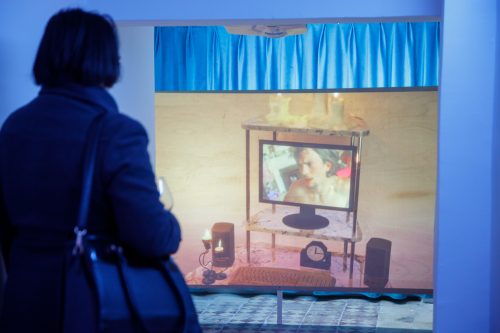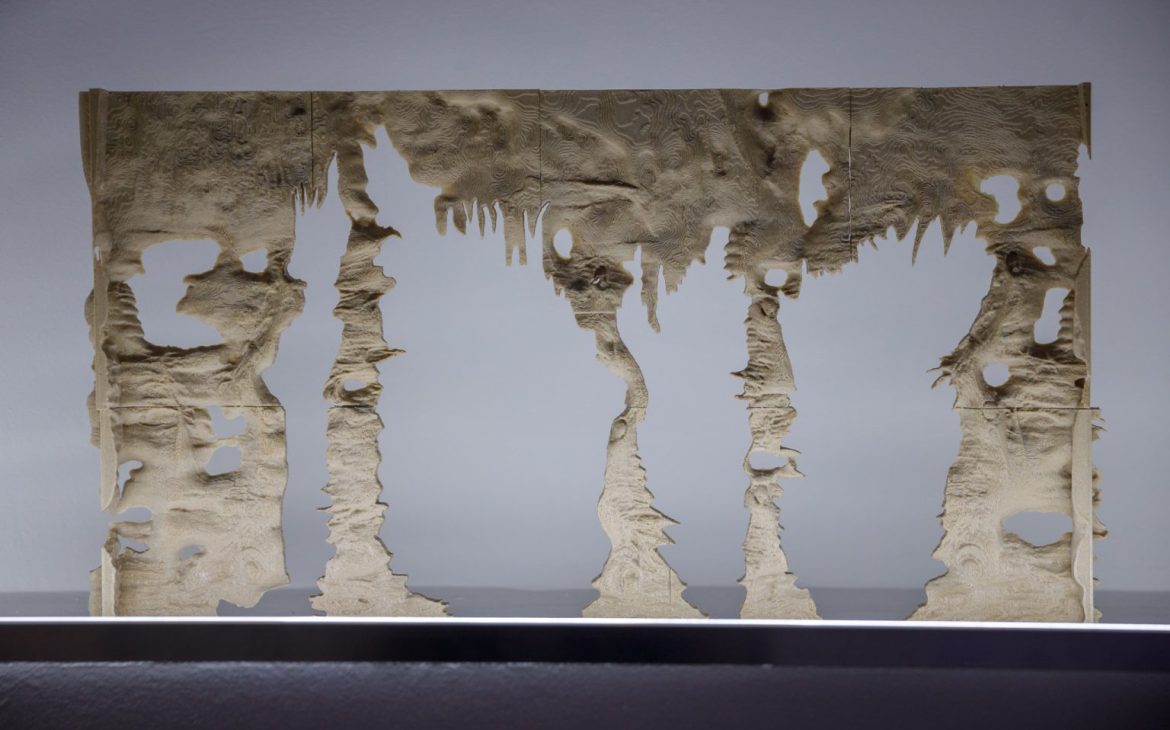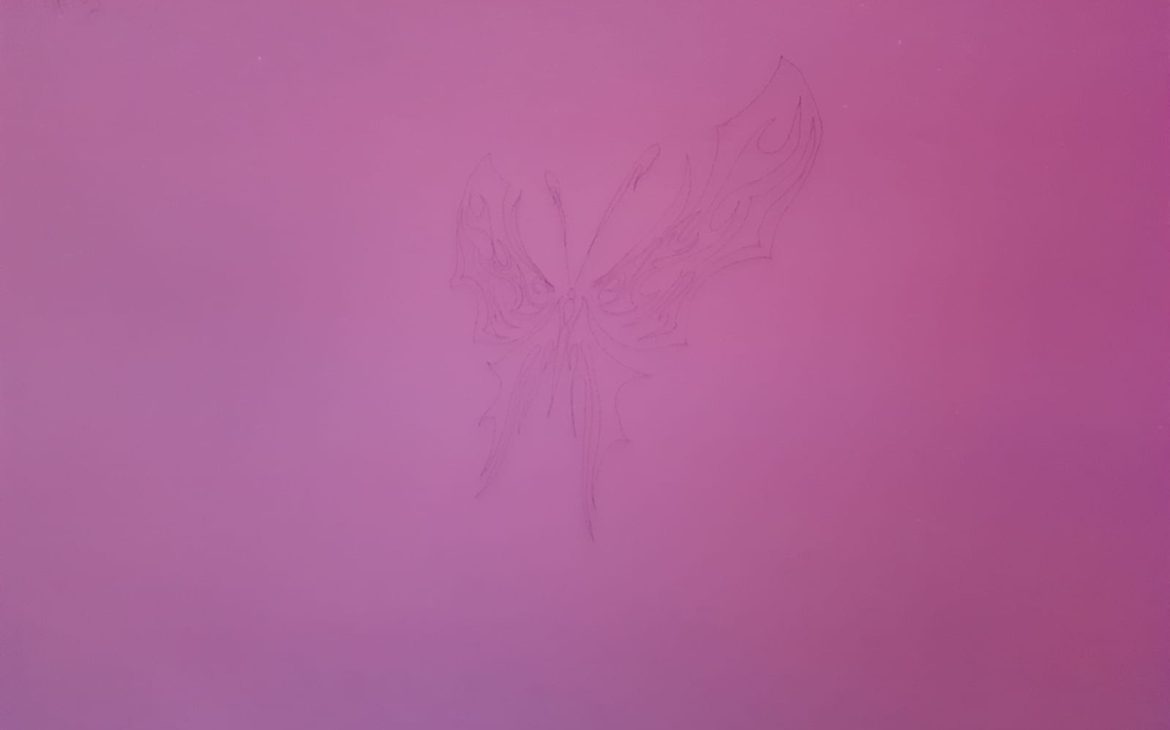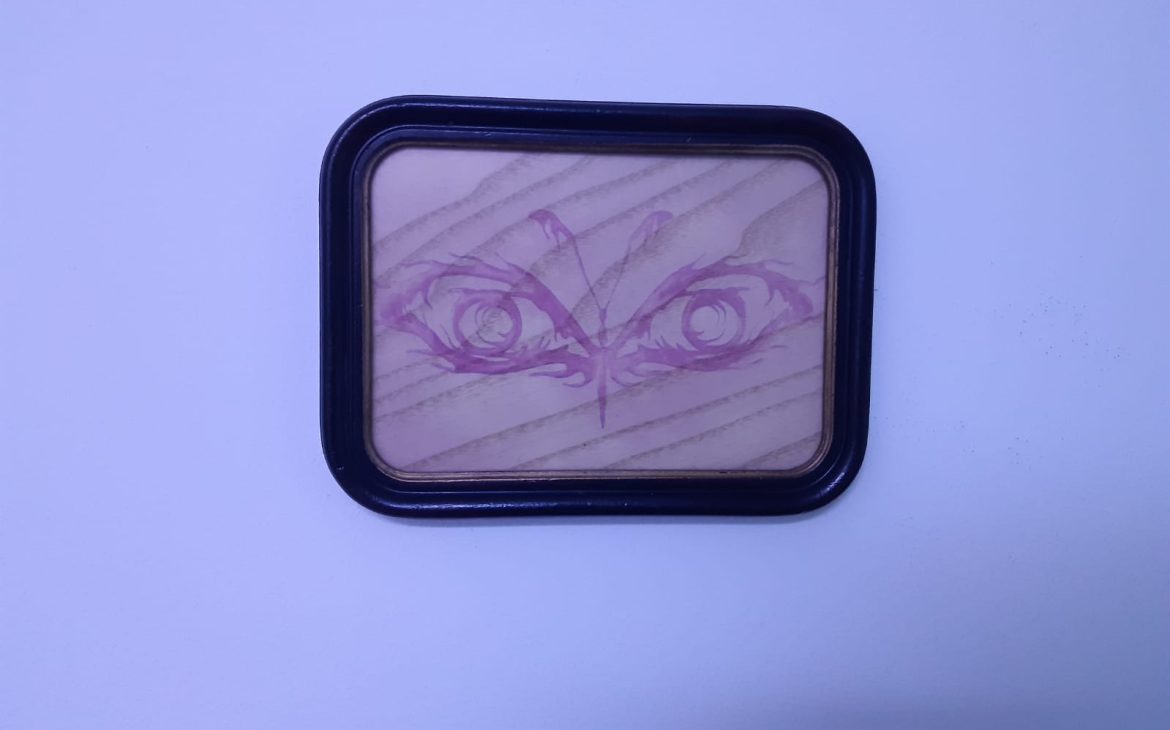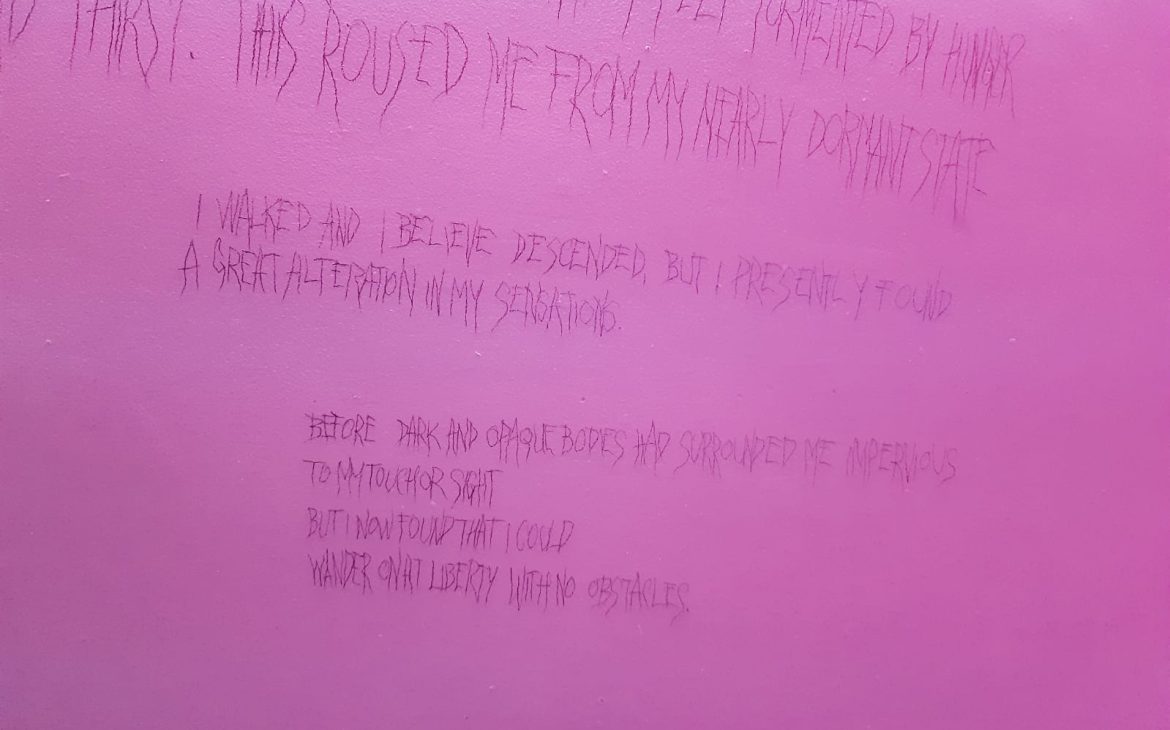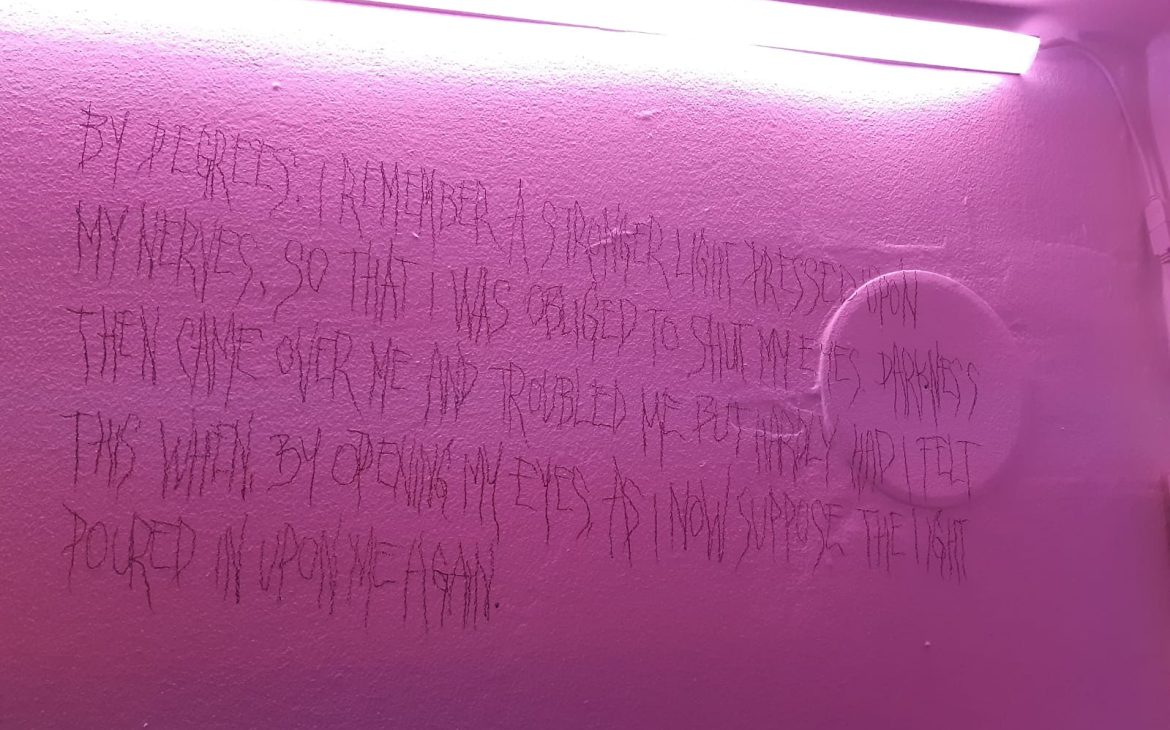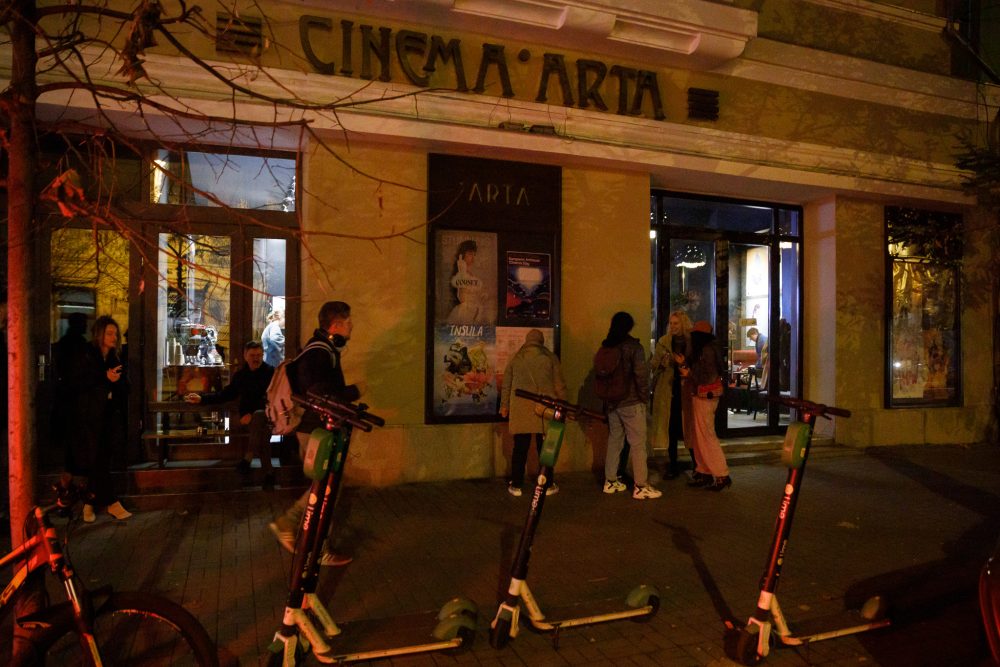December 16th marked the end of the last exhibition for 2022, “Dance of the Butterflies”, created by artist Adrian Ganea and showcased in the Collateral exhibition space, inside ARTA cinema, in Cluj-Napoca. The exhibition opened on November 12th with the presentation of Collateral Video Pill, a selection of video works made by a few contemporary Romanian artists, all chosen by Ganea, to complement his works. This is the first intervention of what is intended to become a recurring initiative in future editions of similar presentations, in the space of the Arta cinema.
Born in 1989, Adrian Ganea stands out in the contemporary local art scene, with his varied practice that probes the elements of theatrical scenography, his areas of interest being the performing arts and those of a rising digital culture. The Cluj-based artist is interested in investigating the effects of anthropomorphism in sculpture and seeks to create liminal worlds with the help of animations and 3D simulations. Ganea lives and works in Cluj-Napoca.
“Dance of the Butterflies”, by bringing together a display of 3D video projections, mixed media installations, sculptures and inscriptions on the walls of the exhibition space, is said to have been inspired by the first photograph taken by Nicéphore Niépce, in 1816, and the image of the oldest cave paintings in the Maltravieso cave, Cáceres, Spain. The first is an unexpected visual representation – a photographic negative of the view from a window – an experimental visual document that evaporated in daylight, the photosensitive paper becoming almost completely black. The photographer named this kind of visual representations, heliographic experiments (drawings in the sun), retinas.
The second source of inspiration for the exhibition is a “red stencil”, made more than 64,000 years ago, “by a Neanderthal (most likely)”. This choice exemplifies the themes repeatedly addressed by Ganea, throughout his artistic career: a mapping of human activities reflected through not only an anthropomorphization, but also a personification of nature, as well as the artist’s personal approach to the multiple problems raised by the posthumanist existential crisis. The latter positions man in the same line with animal, vegetable, and even mineral species. In essence, what seems to be referentially pursued within the present exhibition is the start of a discussion on the theme of rethinking our relationship to this re-evaluation of the human condition. This ought to be done, precisely because of the many apparent limitations of humanity.
The curatorial concept therefore focuses on investigating the mutual influence between man, nature and their creative forces. The symbol of the butterfly and its eyespots, a recurring detail in the works of the exhibition, takes up this theme. What is highlighted in particular is the evolution of these eyespots, as a characteristic of the Nymphalidae family, the Lepidoptera order, over the period of 90 million years, contextualizing the artist’s perception regarding the relationship between man and nature. “Nature is the best tester” Ganea informs us in the curatorial text. This is a criticism of human activities deemed to be inferior in relation to the creative forces of nature. There is no clear understanding of how butterflies’ eyespots evolved in such a way as to create a faithful copy of the eyes of birds of prey, as a means of self-defense. In fact, even the virtual worlds created and populated by “digital realities” of all kinds, which have become alternative living spaces for human beings, do nothing but indicate that whatever is created by the human hand is unoriginal. Even the digital examples that try to “defy the laws of physics and reason” do not stand as anything remotely novel, in the artist’s perception. Everything is founded on what we have already experienced.
A similar message is played by the luminous text that runs continuously, in the mixed media installation in fluffy pinks, one of the first works that draws attention in “Dance of the Butterflies”: “This wonderful art had held him entranced for a long while but now he was dreaming of another experiment. He wished to go one step beyond. Instead of artificial flowers imitating real flowers. Natural flowers should mimic the artificial ones.” This quotation taken from the novel titled À rebours (1884), translated as “Against Nature”, by the author and art critic Joris-Karl Huysmans, belongs to the decadent French literature of the 19th century. In this novel, “going against the grain” is supposed to be evidenced by outlining a taxonomy of the obsessions belonging to the central character, Des Esseintes. These obsessions are all expressions of his particular aestheticism. They are rationalized as exemplifying the eccentricity of Des Esseintes, who is tired of the French bourgeoisie and decides to retire into seclusion. This isolation is a deeply personal and quintessentially artistic one, born out of his experiences of hyperaesthesia, which is an increased sensitivity to stimuli, tactile ones in particular.
Furthermore, the introduction, in Ganea’s exhibition, of a video clip based on fragments from the classic Frankenstein, a novel written in 1818 by the author Mary Wollstonecraft Shelley, and translated into Romanian by Adriana Călinescu, references the many auspicious or destructive interpretations that can be awarded to the effects of human interventions in various creative processes. The famous monster created by Dr. Victor Frankenstein is itself a disgusting assemblage of anatomical parts brought to life and taken from slaughterhouses and anatomy rooms. It is, in other words, a precursor to the transhumanist vision, considered a branch of posthumanist philosophy, which proposes the transcendence of the human condition with the help of technology. The example chosen by the artist seems to indicate the need to engage in a reflection on how we make use of our creative potential, an incitement that does not seem to have lost its validity since the publication of the novel, especially if we take into account the imposed modernization brought about by the Industrial Revolution.
Excerpts from the 11th chapter of the book, the moment when the monster comes to life and is aware of its own existence, are inscribed on the walls of the Collateral artspace. They manage to capture the way in which the creature learns through sensory experience about the duality of being in the world, existence requiring both coolness and warmth, activity and rest, food, water, communion, but also solitude. Along with these quotations, the eye is also drawn to murals of butterflies and butterfly wings. A framed representation of the eyespots on the open wings of a specimen of the Nymphalidae family adds to the pieces on display, and seems to rather suggest that direct contact is being made, while wandering the rooms of the artspace, with the penetrating gaze of a character not fully revealed.
The last room of the exhibition space highlights fragments of 3D simulations and digital worlds populated by human beings, difficult to identify, characters captured either with closed eyes or from behind, running. They seem to be worlds and characters adrift, located in urban and natural landscapes that swallow each other, without any clear demarcations between them. The border between natural and artificial therefore remains undefined.
“Dance of the Butterflies” is part of the Collateral Endeavors project, run by the Lateral ArtSpace Association in 2022. This is a cultural project co-financed by the National Cultural Fund Administration. It does not necessarily represent the position of AFCN and it is not responsible for its content or how the results of the project may be used. These are entirely the responsibility of the beneficiary of the funding. The organizers of the project are Lateral ArtSpace and ARTA Cinema, and partners of the project are the Cluj Cultural Center, together with ARTA Magazine.
The Collateral exhibition space, placed within the premises of the ARTA cinema, Cluj-Napoca is the result of the collaboration between Lateral ArtSpace, meant to act as a launching platform for the current artistic scene and the Cluj-based cinema with a history of more than a hundred years. The initiators of the project that was launched in April 2012, are three artists from Cluj, graduates of the University of Art and Design from Cluj-Napoca: Dragoș Bădiță, Cristina Curcan and Lucian Indrei.

